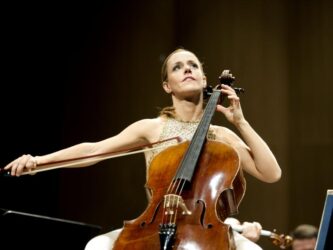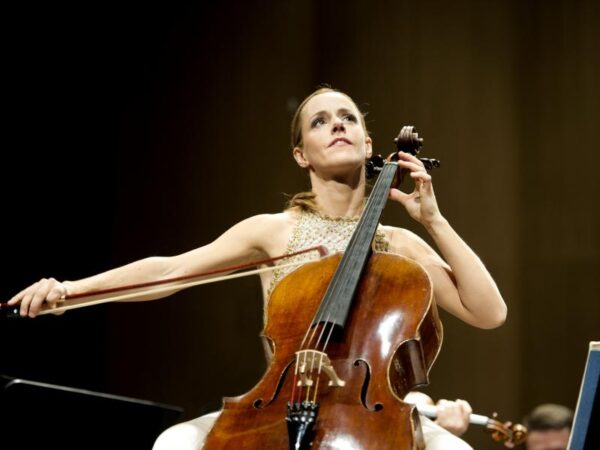 United Kingdom Elgar, Wagner, Sibelius: Sol Gabetta (cello), Philharmonia Orchestra / Osmo Vänskä (conductor). Kultur- und Kongresszentrum (KKL) Luzern, Lucerne, 28.10.2022. (JR)
United Kingdom Elgar, Wagner, Sibelius: Sol Gabetta (cello), Philharmonia Orchestra / Osmo Vänskä (conductor). Kultur- und Kongresszentrum (KKL) Luzern, Lucerne, 28.10.2022. (JR)

Elgar – Cello Concerto Op.85
Wagner – Prelude and Liebestod from Tristan und Isolde
Sibelius – Symphony No.7, Op.105
I was looking forward to hearing Truls Mørk in Prokofiev’s Sinfonia concertante for cello and orchestra (which would have been preceded by the ‘Classical’ Symphony), but the Norwegian cellist has a muscle injury and cancelled. In stepped Sol Gabetta, a Swiss resident, who changed the programme to the Elgar Cello Concerto, which I last heard her perform some six years ago.
I was also looking forward to seeing and hearing young Finnish conductor Tabitha Berglund of whom I had heard much, but she succumbed to the dreaded Covid, so at the very last minute in stepped Osmo Vänskä, who was in any event scheduled to conduct the original programme at London’s Royal Festival Hall two days later (Jean-Guihen Queyras stepping in for Mørk).
Whilst Gabetta’s tone may not be as voluminous or mellow as other cellists, she certainly scores on passion and intensity. Intonation and technique are flawless. Her fingers scampered up and down the fingerboard, harmonics always spot on. She brought just the right amount of wistful nostalgia to the work, written immediately after the ravages of WWI, the Adagio was suitably reflective and world-weary. Sadly, now that Covid is abating and masks have virtually disappeared, the uncovered coughers are back with a vengeance. Nevertheless they could not spoil a very fine performance. Vänskä and the orchestra added little, but he can be excused in the circumstances: all eyes and ears were in any event on the soloist.
Gabetta then treated us to an unusual and delightful encore: the Dolcissimo movement from Pēteris Vasks’s work The Book: complete with fluttering harmonics and the cellist’s singing accompaniments. Gabetta has a especially close relationship with Vasks’s works and the piece can be found on one of her recordings.
The chunk of Wagner, after the interval, was played with great nobility and ardour, Vänskä whipping up quite a frenzy at the appropriate moment. The work was written in Lucerne, with close reference to Wagner’s love for – and affair with – Mathilde von Wesendonck just up the road in Zurich. The Liebestod welled up in waves of sound, the Philharmonia showing us that they have always been, and still are truly a world-class orchestra. They have even found a young timpanist to follow in the footsteps of the great Andy ‘Thumper’ Smith.
Hugh Canning (Sunday Times music critic) has described Osmo Vänskä as the world’s greatest living Sibelian – and on the strength of his interpretation of Sibelius’s last symphony (a masterpiece in ten mini-movements lasting just over twenty minutes) I cannot disagree. It was simply breath-taking. Incidentally, before Mahler became so popular in the 1970s, every aspiring conductor had to master all the Sibelius symphonies). Vänska wrenched the sound of dark granite out of the orchestra and principal trombonist Byron Fulcher stood out in particular, as did Leader Benjamin Marquise Gilmore and principal cello Karen Stephenson.
And the encore: Valse Triste, what else?
John Rhodes
